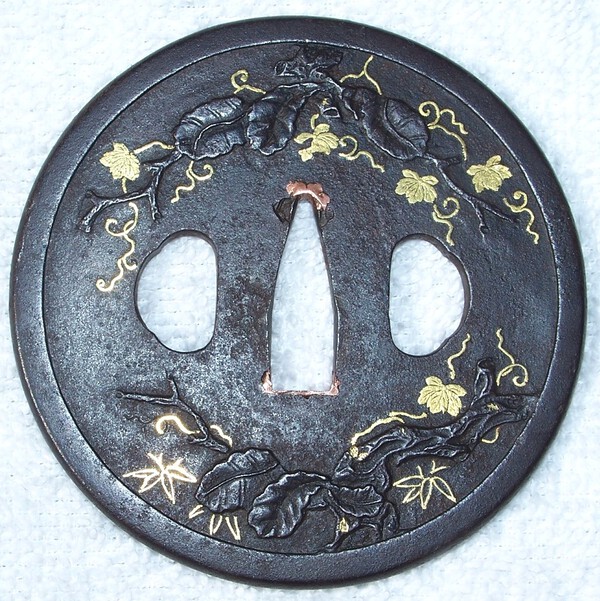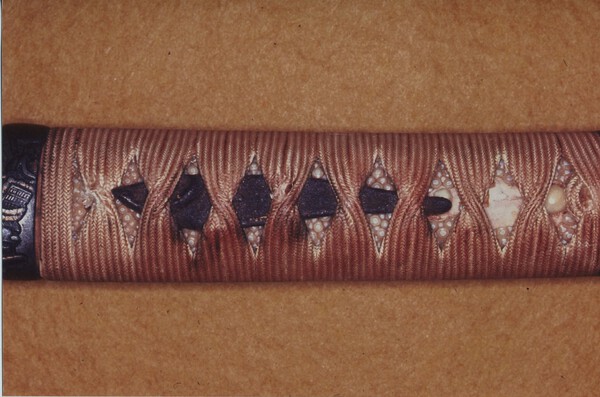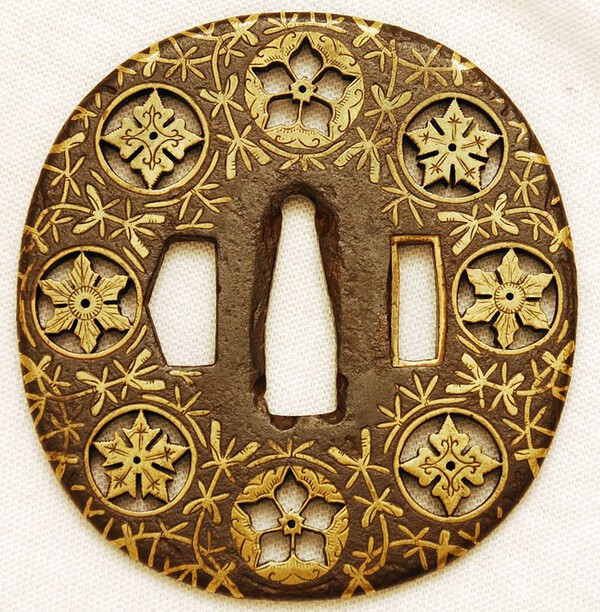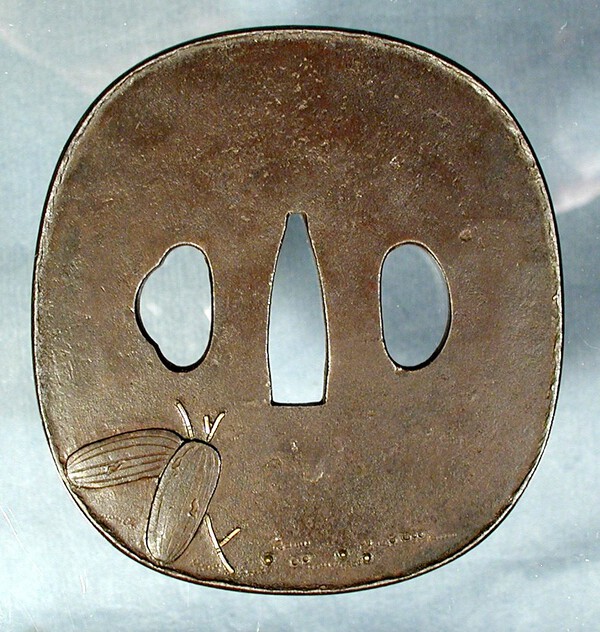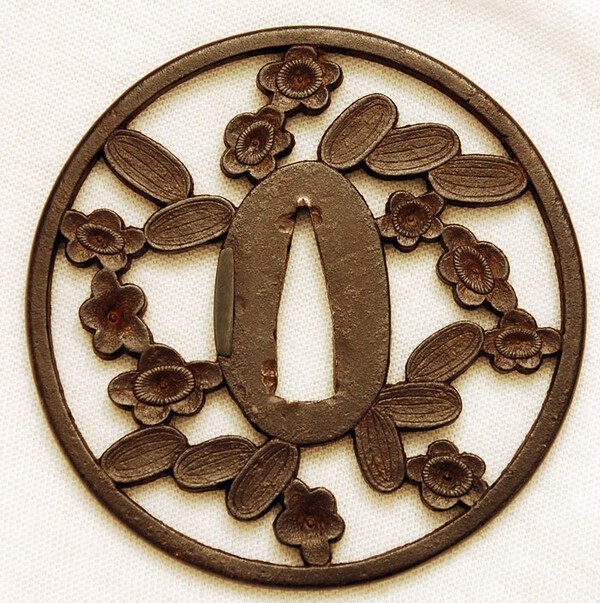-
Posts
703 -
Joined
-
Last visited
-
Days Won
4
Content Type
Profiles
Forums
Events
Store
Downloads
Gallery
Everything posted by Ron STL
-
Chris, Morita san - This is exciting to see! This catalogue is all new to me. The oshigata are beautiful and I'll copy these to my files for future study. Thanks so much for correcting/explaining the inscription, too. I've changed this in the article which will likely be in the next issue of the JSS/US newsletter or the one after. I've gained even more apprication of my two Sa Nobumitsu works! Ron STL
-
Thanks guys I was trying not to bother you again Chris, but you always come through. I'll get this info into the article and hopefully it will be useful to people. Ron STL
-
I am finishing an article for the JSS/US on gendai smith Koyama Nobumitsu. In Shinshinto Taikan there is an example of his work. The nakago includes a long inscription pertaining to the sword being exhibited in Showa 14 celebrating the 700th anniversary of Emperor Gotoba...something like that. I was surprised to not find this inscription already translated somewhere. To that end, it would be helpful I would think, to include a full translation (and some comments) for this inscription. (Another smith's sword on the same page also carries the same inscription). Would somebody give a full translation of this specific inscription and also the kanji used in it? What I would do is to include this in the article for future reference. Thanks! Ron STL
-
Aizu Shoami? What would direct us to Aizu Shoami over Umetada??? This never entered my mind, why I ask. My friend might supply a couple better photos which I'll add to the topic. Unless of course, we have convincing opinions. With so few replies I suspect there might not be much more to say, but again, I'd love to here how Aizu Shoami was determined. Thanks! Ron STL
-
A friend brought over an very nice iron tsuba today for opinion. I did not measure the tsuba but it is nice size (~76mm) and fairly thick at the rim (~5mm). The plate feels dense (heavy) and has very good color and condition. Photos showing both sides will be coming. For now, both sides have the same design but are not mirror imaged. (positioning of leaves, etc. are slightly different side to side.) The flat rim appears to be the original plate and the oak leaves and knarled trunks appear to have been raised, carved from the original plate. (This technique name escapes me at the moment. Niku-bori?) From the gold bamboo and kiri leaves and the twisted vines, I felt this might be a Higo tsuba. Hitsu-ana are also the same shape and made slightly flowing, not pronounced rounded, rounded, rounded. But looking further, the flattened rim and the hitsu-ana shape led me to think more ko-Umetada or simply Umetada and not so much Higo. Oh yes, the other "detail" photo show some missing inlay. Note that the inlay has been inlaid and not applied nunome-zogan. No positive answer here but it would be interesting to get some opinions on this lovely iron tsuba. Ron STL
-
Interesting tsuba. My first impression was ko-kinko. The hammering around the nakago-ana was convincing. The crispness of the sukashi could happen since the plate is protected by a heavier rim. But I would had thought there would be some surface markings or punchings as you see on earlier pieces. The hitsu-ana looks original and appears to have a nice "pillow" set into it. If not ko-kinko and Edo work, I'd likely push it only into early Edo. Quite interesting and I'm sure having it "in the hand" can tell you more. Ron STL
-
this sure looks Kanayama except for its size. Always exceptions to the rule (small size, etc.) Any prominent "bones" in the rim? First I've heard of Tochibata tsuba, but the tsuba on Grey's site look a lot newer than this handsome tsuba. Ron STL
-
The subject of Christian items being used on tosogu has fascinated me for many years. Those days of Christian persecution in Japan were tough times. What a risk it was to wear a symbol of your faith! The so-called "hidden cross" motif can be found on tsuba, etc., and while many were placed there as a marketing thing, there are many that are totally "honest." Here are a few Christian symbles on tosogu that I believe are "honest" and placed there by early Christians. First, a kogai with a beautifully detailed gold "cross" on it. When the kogai is in place on the saya, the "cross" would be hidden within the saya. Real or not real? I personally feel it is an honest "Christian" piece. This is owned by a Jewish friend of mine here in St. Louis. I keep telling him he should sell it to me, a good Catholic...but I'm still waiting! Second, a tsuka that I once owed many years ago. The menuki are iron "dried fish" while the iron kashira depicts what looks like a Bishop's hat or "mitre." I regret selling this to a Canadian many years ago while at a Toronto show. The buyer had a "Christian theme" display set up, so it went to a good home. Last, a wonderful Yoshiro tsuba. This one might be a little more speculation, but if you look at the placement of the top/bottom which are identical and the side "mons" which are also identical, they form a "cross." Since I admire Yoshiro mon sukashi tsuba, I've always watched for another example of this cross placement, but I've never comes across another. Was this owned by a Christian samurai? Maybe, maybe not, but I do love the tsuba! Ron STL
-
Interesting challenge here...I agree with Ray. 1 - shinto 2 - shinshinto 3 - Nambokucho 4 - Kamakura Number 3 could be a fooler, being a shinshinto copy of Nambokucho shape, made to look old. Ron STL
-
I just checked and Sasano's 2nd book is availabe for $200 from Benson: http://www.bushidojapaneseswords.com/bo ... plies.html The available KTK catalogues can be found and purchased for under $150 pp; I'll have to see what editions are here. The copies of Benson's Bushido publication (now out of print) are well worth Bob's price, too. Too Bad the Haynes catalogues are so hard to find. Years ago Bob gave me a box of those to "give away" to anyone interested, which I did. Ron STL
-
This talk makes me reminisce about what books have guided my interest in tosogu. I've always enjoyed menuki and that has always been a difficult area of study with little info available. I have always found Dr. Torigoye's books -- Kanshokei and Toso Soran -- especially useful. Visual study for the most part, with limited English. Then Sasano came out with his Sukashi Tsuba and his later updated edition (published after his death). Specific to sukashi tsuba, the photos and English text are good. Of great help are the catalogues produced by Robert Haynes. Average photo quality but ah, those wonderful works in English in Bob's words! Today, with the internet and publications, often in English, found today make study a bit easier that back in the 1960s and 1970s. I am particularly proud of being a KTK member and part of those who produce the excellent annual KTK publications. Each publication shows "the best" tosogu selected by KTK members for each edition of our catalogue. The photography is as good as it gets (thanks Richard!). Unfortunately, the last few years publication has been limited, but some copies are still available from members. (We purchase x-number of copies to support the printing of each publications.) Nihonto Koza sword fittings volume is well illustrated and translated into English. Frankly, we all find a lot of our study accomplished by well illustrated books and then, of key importance, seeing and handling actual examples at sword shows. One quickly discovers who has excellent quality tosogu laid out for study! Sadly, not many show attendees take advantage of these opportunities. Everyone gets fired up by the rush of the show. That said, a reminder to go visit the table of those willing to share! (Thanks Curran, Mike, etc.) Ron STL
-
Just read the comments on this topic. I enjoy Kamakura tsuba, but this one looks more Hizen or Jingo. Kamakura-bori tsuba are thinner (the similar on on Jim's site is 3mm). I've not seen any with this heavy of a rim and the rim zogan again looks like from around Hizen (with namban influence, as one sees). The dragon is the rain dragon, I believe. Somewhere, I read about the Jingo using a very unique looking dragon, but that reference escapes me. Unfortunately, I will miss Tampa again this year. Ron STL
-
For my own records,if a blade (daito sized sword) is signed as such, I call it a katana or tachi. If mumei, then I would call it a daito since we can't tell if it was katana or tachi. I used to go one step further on mumei swords and if Nambokucho or earlier, just call it a tachi since katana didn't exist, but it is more acceptable (in my opinion) to simply call those daito. Ron STL
-
Clive - Thanks for the good information. I finally got around to checking Hizen Taikan and realized there are two sections to the taikan, both with seperate page numbers. The section I referred to was in the first section of the taikan. Take a look and you'll see what I was talking about earlier. Meanwhile, again, thanks for the info you gave out previously. All interesting stuff, for sure! Maybe I should add that what brought this up, I purchased the Hizen Yoshinobu hirazukuri wakizashi that was illustrated in the 2012 DTI catalogue. The blade has beautiful horimono. From what I can tell, while the hori is detailed on the Juyo description, no mention is made about who was the carver...unless, as always...I'm just not finding it. Finding this section in Hizen Taikan was a start...maybe. Ron STL
-
In the Hizento Taikan thre is a section on horimono that, if I understand the contents correctly, shows various horimono examples. I think these or some at least are identified by the carver. On page 149 (identified as #11 example) shows a sword by Hizen Yoshinobu along with text on a Tadamasa. Can anyone comment on this entry and if by chance, Tadamasa did the carvings on Yoshinobu's works? It looks like the back of the nakago on the Yoshinobu example is signed by this Tadamasa. Not expecting a full translation of course, but maybe a little info on Tadamasa as a carver? Anything is better than nothing. Ron STL
-
I was going to end this discussion but today, in the book "Elements of Japanese Design," page 46, I came across the attached. Unfortunately, there is no detailed comment on this example, but at least we can see an example of this "mellon looking" bamboo leave under discussion. Ron STL
-
Interesting link on photography in Japan, Clive. It looks doubtful that Naotane ever seen a camera, or Naokatsu, either. Best to hope for would be a painting such as the one you pointed out of Masahide. I bought the book last SF show from the authors but must admit, I've yet to "read" it. (You know how busy retirement is!) I love the old photographs relating to swords. Ron STL
-
Hopefully, I'm repeating an earlier request...but I've heard that "somewhere" there has been published an early photograph of shinshin-to smith Naotane (and possibly, Naokatsu). Photography was just beginning during Naotane's life, so a photograph seems possible. If such a photograph would exist, I suspect it was published in one of theToken Shibata catalogues from the 1980s, but that's just a guess. Mr. Shibata had many interesting articles in his cataogues. Today, going thru some of these I came across some of these articles that featured Taneaki, Toshihide, etc., but nothing on Naotane. Again, apologies if this is a repeat request on the NMB, but I must ask the question. I find it very interesting to put a "face to the name" whenever possible. The Hizen-to scroll comes to mind along with photos of Meiji, Taisho and early Showa smiths. Ron STL
-
Thanks for the laughs! Somewhere, I've seen this "diving bird" motif before and misread what it was, but have no recollection of where and when. I notice the nakago-ana is opened up a bit (made rectangular) at the "sword ha" end. Wonder if this was used on a naginata at one time. Small mokko shap tsuba...could be. Ron STL
-
Thanks everyone, I guess "bamboo" is the mystery plant as Morita san said earlier. The jointed stalk sure points to that, so I'll accept this description as correct. the designs David posted do indeed look like this, I must admit. Thanks everyone, for your imput here! Ron STL
-
David, thanks for reminding me of this additional info. Honestly, I had forgotten about that being part of it all (attached). What I thought was refering to "ume" was 櫃 (hitsu) in "kata-hitsu ana shitate"...thinking that was the kanji for "ume." My mistake. Ron STL
-
Sorry to beat this motif discussion to death, but one more favor to ask. I've copied the description of the Kyo-Shoami from the origami. I can see "ume" there but nothing about bamboo jumps out at me. But then I do not read Japanese enough to fully read the discription. Morita san, anyone, will you take a look at this please? Thanks. Ron STL
-
I just realized there is another tsuba here with that same motif. These "fruit" do look like melons, but notice the "bamboo-like" stalks on the Hamono crab tsuba. Searched through Japanese designs...found nothing. Ron STL
-
Does anyone know what the oval pods or fruit might be called on this iron sukashi tsuba? The blossoms appear to be plum blossoms (except maybe two w/o centers?), but the fruit or whatever, puzzle me. Thanks! Ron STL
-
Over the years I've collected eight or so of these so-called Mino Goto style tsuba, but most of them carry the more typical insects and flowers motif. A lot of these do appear almost mass produced because of the repetitive designs used. Notice, both of these tsuba carry the typical five punch marks at the bottom of the nakago-ana that most tsuba of this kind carry. I've always wanted to write an article on this kind of tsuba but have never felt confident to say much about them. The ones that do come from Mino are understood, but then you get into the similar works produced elsewhere and into later times. These can be a bit costly and I've got some "bargain" finds and others that I grossly overpaid for...so goes life, eh? Ron STL




